Quantum computing and quantum communication are hot in China. In fact, it is not only in China, but also in foreign countries. Everyone thinks that supercomputers have reached a bottleneck, and quantum computers may be a way out. This month's IEEE Spectrum 2018/April issue, Lee Gomes, published a long article titled "Quantum Computing: Both Here and Not Here" that presents a more detailed account of the current state and future of quantum computing.
Schrodinger’s cat, everyone has heard that it is both alive and dead. The scientist who now follows Schrödinger is also in a strange state, at the same time happy and horrified. The experiment of Schrodinger’s thoughts now enters the period of creating quantum computers, hoping to do something that traditional computers cannot do.
The 2014/2/17 Times magazine covers the "infinite machine", saying that it can solve most of the complex issues of humanity. Since then many magazines have followed this exaggeration. Scientists hope to show quantum hegemony, that is, the system can solve the problem that the traditional computer memory and processor cannot handle. In fact, the Google algorithm does not have any practical meaning, but it is beyond the scope of the current traditional computer.
It takes many years of research to build quantum computers to solve real-world problems. Engineers at Google and IBM who are engaged in quantum computing say that it may take decades for the Quantum Dreamer to solve problems that make computing confusing. Even then, no one expected the quantum computer to replace the traditional computer. All current quantum computers are the steps of preprocessing and post-processing together with traditional computers. The task of programming that many traditional computers can perform very quickly may be slower on a quantum computer, even if all the hardware and software that are associated with the quantum computer are available.
Stephen Jordan, who later transferred Quantum's years of research at the American Institute of Standards and Technology (NIST) to Microsoft, said that quantum machines are only useful for computing tasks that today require a lot of resources to invest in computers.
The idea of ​​a quantum computer stems from a speech by the 1981 Nobel laureate and physicist Richard Feynman. He pointed out the possibility of using subatomic particles to model the morphology of other subatomic particles. However, a key starting point is an article by Peter Shor. He later went to AT&T Bell Laboratories and now MIT. He said that if a quantum computer can be built, it can find the prime number of prime factors, thus defeating the commonly used public key cryptosystem. This computer will basically break the Internet. This opens the study of quantum cryptography. The US security department soon began to study quantum hardware. The government has spent billions of dollars over the past two decades. Now that this technology is near commercialization, venture capital has also been involved. Therefore, it is not surprising that there is currently a hype around Quantum.
How does a quantum computer work? As we all know, the state of quantum is not expressed by 0 and 1. The quantum computer is based on a qubit, which is a quantum object with infinite states, related to the probability of being 0 or 1. Everything, such as electrons and photons, can be used as qubits as long as they have quantum properties, are isolated, and can be controlled.
When a qubit is loaded into a computer, it has to contact certain institutions to deliver electromagnetic energy to it. In order to run a particular program, the computer uses a well-designed sequence, such as microwave transmission, to push the qubit at a certain frequency for a certain period of time. These pulses correspond to the instructions of the quantum program. Each instruction causes the unmeasured state of the qubit to be involved in the process in a specific way. These pulses do not operate on a qubit, but on all qubits in the system. Each qubit receives a different pulse instruction. The qubits in the quantum computer interact through a so-called entanglement process, just like talking and linking their destinies. The focus of quantum computer researchers is to use any changes in the qubit-ordered state to perform useful calculations. After tens of thousands of pulses, the program is completed, the final result of the qubit calculation is calculated, so that each qubit becomes 0 or 1 and the waveform function becomes a quantum machine.
This process is very engineering, but it must be ensured that the qubits are not disturbed during the calculation. It is very difficult to do this. This is why for so many years, only one or twenty qubits can be done to complete the simplest arithmetic operation. Due to interference, qubits can easily become faulty. Therefore, qubits must have redundant backups. When one bit goes wrong, it can be corrected with the backup bit. This kind of error correction also exists in the regular computer, but the number of backup bits is much more in the quantum system. Engineers estimate that in reliable quantum computers. Each qubit requires 1000 backup bits, or more. Because many modern algorithms begin with thousands of qubits, useful quantum machines may require millions of qubits.
The recently announced Google quantum computing chip has only 72 qubits. Whether it can be useful depends on how high their error rate is. The pioneer of Google’s quantum computer team was recruited from the University of California, Santa Barbara, in 2014. In November last year, IBM announced that they had made a computer with 50 qubits, INTEL announced a 49 qubit array, and the newly opened Rigetti in Berkeley, California, all relying on specially designed chips, using virtual superconducting circuit loops. The road makes it quantum. These chips must be kept at extremely low temperatures, and the cooling mechanism becomes very complicated, just like Hollywood's sci-fi movie props, creating a small system. Duke University physicist Jungsang Kim and University of Maryland Christopher Monroe opened a new company, IonQ, with a completely different quantum hardware architecture. A quantum dot, the ion, is suspended in the system and operates at room temperature. They made a machine with helium ions. Microsoft's pursuit of the third route, called topological quantum computing, has a theoretical commitment, but no hardware has been built.
None of these systems makes quantum-related computing platforms acceptable to the public. Canada's D-Wave system has been installed in large companies such as Google and Volkswagen, but from the perspective of experts in the field of quantum computing, the D-Wave system cannot do anything that conventional computers can do, nor does it achieve any quantum acceleration.
It seems that Google-IBM-Rigetti's superconducting route has prevailed in the hardware competition. However, I don't know which one will eventually win, or where the three will coexist. Quantum programmers don't care who wins, as long as the qubits are easy to use.
One of the unknowns of quantum computing is how fast the machine can increase qubits. For traditional computer technology, Moore's Law guarantees that the number of transistors can be doubled in two years, but complex electronics with quantum machines do not have such predictions. Many engineers expect that in the near future, there may be machines with a small number of qubits, such as several hundred qubits. Because light is a machine that basically shows quantum authority, it may not provide any useful results, and a mature system may be many years later. Therefore, engineers are concerned that algorithms on properly sized quantum systems can be implemented in the near future. Some people wonder whether quantum computers can solve real-world problems in the near future or use it to make money. We need a bigger system.
Since MIT's Shor developed an algorithm for extracting factors, quantum computing is closely related to cryptography, but the abolition of Internet cryptography makes the quantum realm aware that the Shor-worthy machine still has a long way to go, and that Quantum cryptography also does not affect any quantum attacks. Now NIST is evaluating various post-quantum cryptographic schemes.
Recently, researchers have focused not only on encryption technology, but have turned to Feynman's original ideas on quantum computing to turn to the study of machine-modeling atoms and molecules. Simulating physics and chemistry in the NIST quantum algorithm Zoo, but at a higher cost, imagine what happens to a superconducting metal at room temperature.
Irrational prosperity should be prevented. Andrew Childs, a physicist and computer scientist at the University of Maryland, predicted that the first generation of quantum computers could only handle fairly simple physical and chemical problems. You can use several bits to answer questions in condensed matter physics, but understanding high temperature superconductors requires a lot of bits.
With quantum computers, there are more and more optimizations. The more practical the programmers get, the better their algorithms will be. This is why IBM's quantum machine was put online and the researchers changed it. We need improvements in available quantum machines and algorithms that require tens of thousands of students to promote this area. Classical computing has been for 100 years. We don't want to be in the era of electron tubes. Hope is still there, but the road is still long. Look at the picture below to know a little.
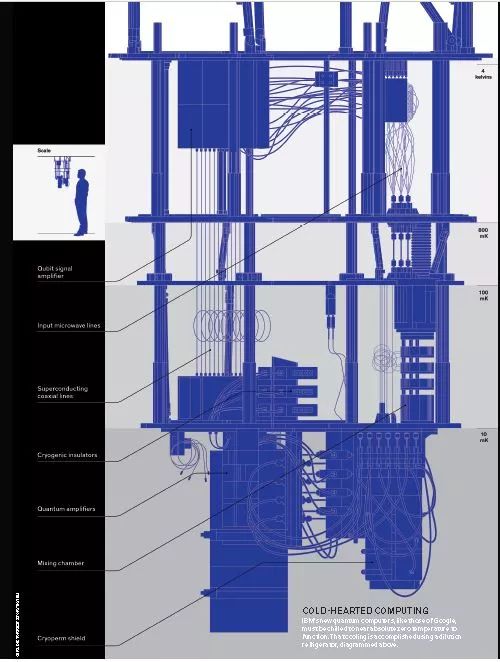
Figure 1: IBM and Google's quantum computers need to cool to near absolute zero to work, and this cooling is done with a dilute refrigerator. The following is its block diagram.
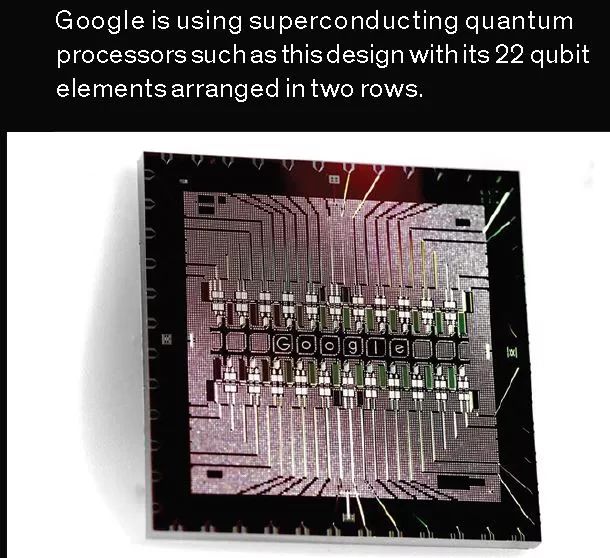
Figure 2: Google uses superconducting quantum processors, such as the following 22 bits arranged in two rows.
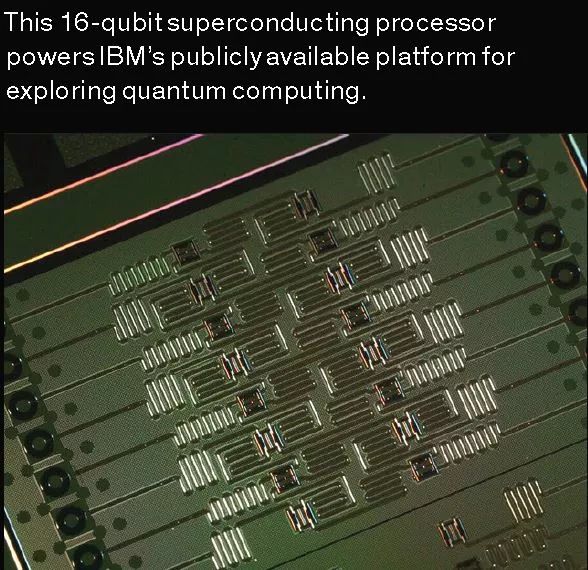
Figure 3: IBM uses a 16-bit quantum processor to drive the IBM public platform and explore quantum computing.
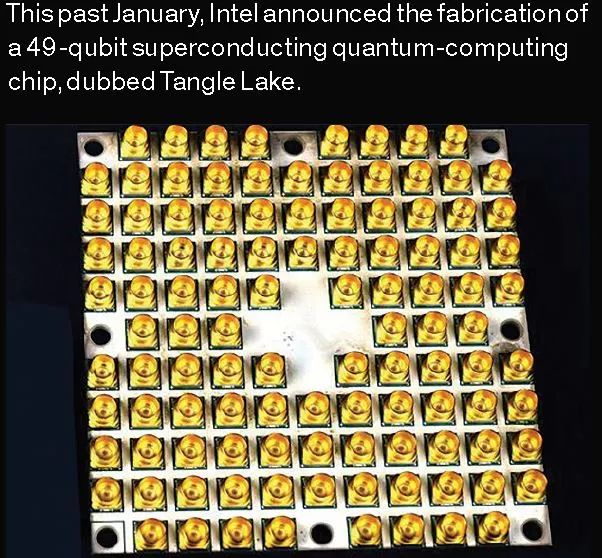
Figure 4: In January last year, INTEL announced the creation of a 49-qubit superconducting quantum computing processor called Tangle lake.

Figure 5: 2016 IonQ demonstrates a working 5-qubit computer that uses a helium ion trap in a laser processing device.
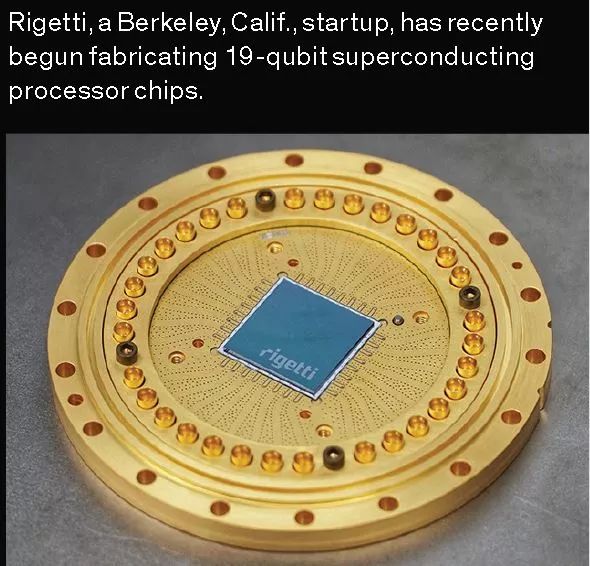
Figure 6: Rigetti, who just opened in Berkeley, Calif., recently began manufacturing 19-qubit superconducting processor chips.
Home Air Purifier,Air Purifier,Room Air Purifier,Indoor Air Purifier
CIXI KYFEN ELECTRONICS CO.,LTD, , https://www.kyfengroup.com
